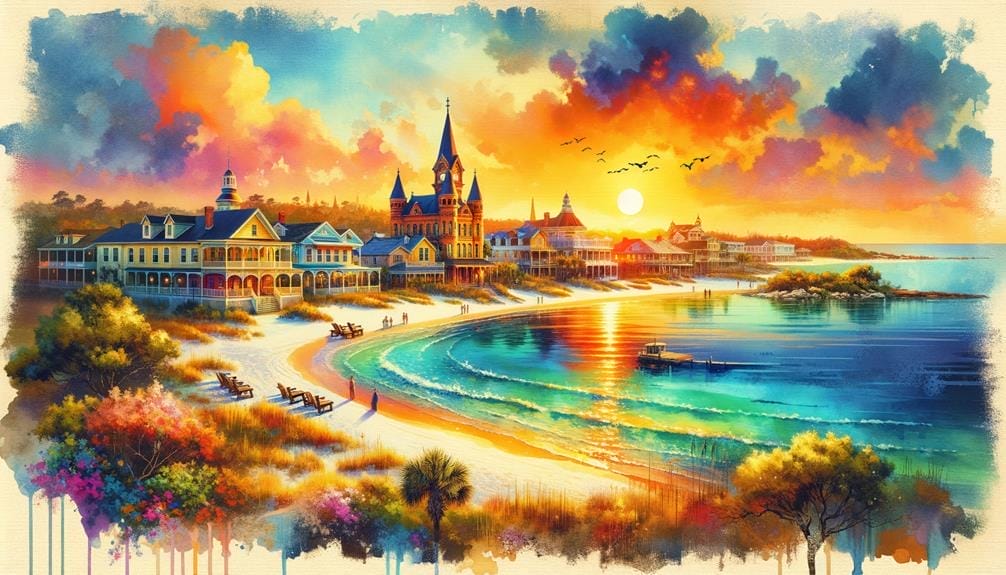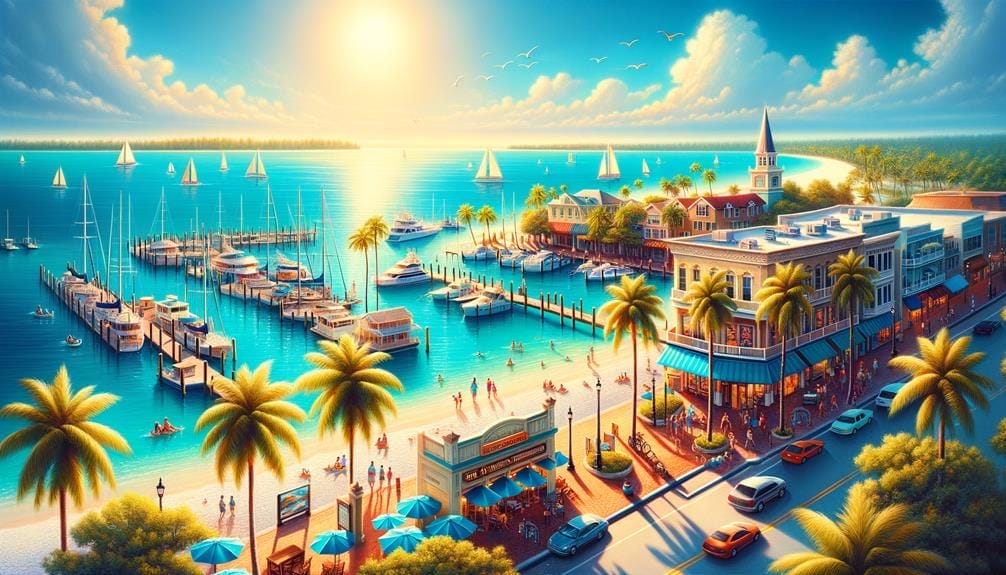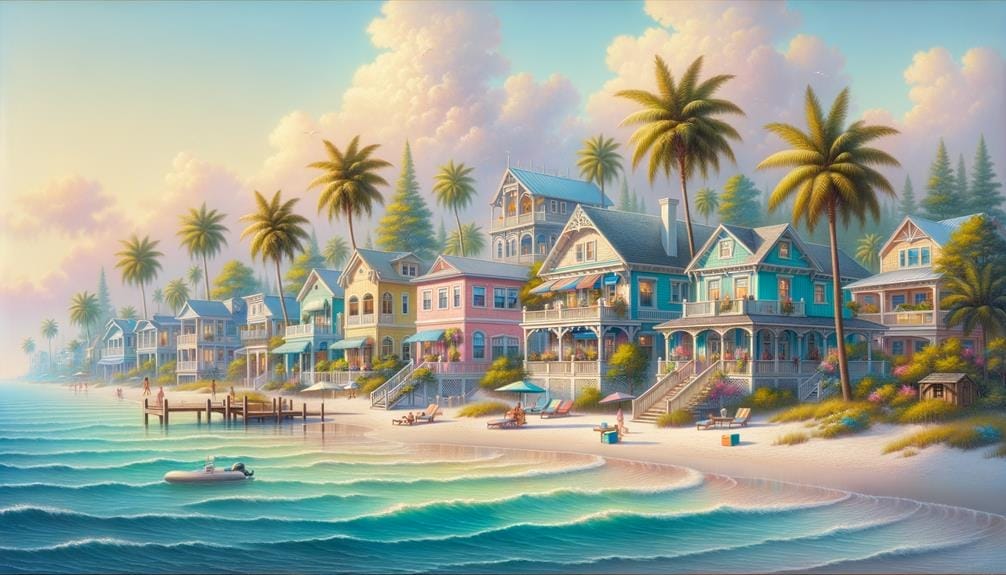Did you know that WaterColor, Florida has a history that dates back to the early settlements and Native American influence in the area?
This charming community on Scenic Highway 30A has a fascinating story to tell, from its colonial era beginnings to its contribution to Florida's tourism industry.
But there's more to discover about WaterColor's past, including notable figures, architectural styles, and its role in the Civil War.
So, grab a seat and get ready to uncover the secrets that have shaped this unique and vibrant town.
Key Takeaways
- WaterColor, Florida has a rich history dating back to early settlements influenced by Native American tribes such as the Calusa, Timucua, and Apalachee.
- Native American tribes played a significant role in shaping the early history of Florida through trade networks, agricultural practices, and the use of natural resources.
- Spanish exploration and colonization in Florida began in 1513, with the establishment of the first permanent European settlement at St. Augustine in 1565.
- WaterColor, Florida was founded as an unincorporated community influenced by English, Dutch, Spanish, and French Colonial architectural styles, and it offers a range of amenities and adheres to equal housing opportunities.
Early Settlements and Native American Influence
Early settlements in Florida were heavily influenced by Native American culture, shaping the foundations of villages, trading networks, and the overall way of life in the region. Native American tribes such as the Calusa, Timucua, and Apalachee played a significant role in the early history of Florida. These tribes inhabited the land long before the arrival of European explorers and settlers in the 16th century.
The Native American influence can be seen in various aspects of early Florida settlements. One of the most notable contributions was in the establishment of villages. Native Americans had a deep understanding of the land and its resources, which allowed them to choose strategic locations for their settlements. These villages served as centers for trade, social gatherings, and cultural activities.
Trading networks were another important aspect of Native American influence. Native American tribes engaged in trade with neighboring tribes, exchanging goods such as food, tools, and crafts. This trading network facilitated the exchange of ideas and technologies, contributing to the overall development of early Florida settlements.
Furthermore, Native American agricultural practices greatly influenced the way early settlers cultivated the land. Native Americans cultivated crops such as maize, beans, and squash, which later became staples in the diets of European settlers. The use of natural resources for construction and crafts, such as shells and palm fronds, also reflected the Native American influence on early settlements.
Spanish Exploration and Colonial Era
Spanish exploration and colonization in Florida during the colonial era left a lasting impact on the region's history, culture, and identity. The Spanish first set foot on Florida's shores in 1513 when Juan Ponce de León embarked on his quest for the legendary 'Fountain of Youth'. This marked the beginning of a period of Spanish dominance in the region.
In 1565, the Spanish established the first permanent European settlement in Florida at St. Augustine, which still stands as the oldest continuously occupied European-established settlement in the United States.
During the colonial era, Spanish efforts to colonize Florida were met with challenges, including conflicts with indigenous peoples and rival European powers, such as the French. Despite these challenges, the Spanish influence in Florida is evident to this day. Place names, architectural styles, and cultural traditions bear the marks of Spanish colonization.
The region's rich history and cultural heritage are reflected in attractions like the WaterColor community, situated along the Gulf of Mexico, and Grayton Beach State Park, known for its pristine beaches and natural beauty.
The Spanish exploration and colonial rule in Florida lasted until 1821, when Florida was ceded to the United States. However, the legacy of Spanish colonization remains an integral part of Florida's identity, contributing to its unique blend of cultures and its vibrant history.
The Birth of Watercolor: Founding and Development

The legacy of Spanish exploration and colonial rule in Florida paved the way for the birth and development of WaterColor, Florida, an unincorporated community in Walton County known for its Southern wood homes and architectural homage to classical coastal towns influenced by various European styles.
Managed by The St. Joe Company, WaterColor offers a range of amenities, including a swimming pool, fitness center, tennis courts, and access to the prestigious Camp Creek Golf Club. Located in the Florida Panhandle, WaterColor benefits from a subtropical climate and is part of the New Urbanism movement.
The town's architecture draws inspiration from English, Dutch, Spanish, and French Colonial styles, creating a unique blend of European influences. In addition to its charming homes, WaterColor boasts a diverse culinary scene, serving Southern Coastal-style cuisine.
The community is committed to providing equal housing opportunities, aligning with U.S. policy. With its rich history and carefully curated design, WaterColor stands as a testament to the beauty and allure of classical coastal living.
Notable Figures and Pioneers in Watercolor's History
Now let's turn our attention to the notable figures and pioneers who've played a significant role in Watercolor's history.
These influential artists have showcased their talent through their unique styles and techniques, helping to shape the art scene in WaterColor, Florida.
Influential Watercolor Artists
Who were the influential watercolor artists that played a pivotal role in shaping the history of this artistic medium? Here are four notable figures who made significant contributions to the development and popularity of watercolor:
- John Singer Sargent: An American artist known for his influential watercolor paintings, particularly his portraits and landscapes. Sargent's mastery of the medium and ability to capture light and atmosphere made him one of the leading watercolorists of his time.
- Winslow Homer: Another American artist, Homer is renowned for his powerful and expressive watercolor works. His paintings depict scenes of nature and everyday life with a remarkable sense of realism and emotion.
- J.M.W. Turner: An English Romantic painter, Turner was a pioneer in elevating watercolor to a respected medium for artistic expression. His atmospheric and dramatic landscapes pushed the boundaries of what could be achieved with watercolor.
- Paul Sandby: Considered one of the founding figures of the watercolor tradition, Sandby contributed to the popularity and recognition of watercolor as an art form. His landscapes and architectural studies showcased the versatility and beauty of the medium.
These influential watercolor artists not only left a lasting impact on the history of watercolor but also inspired generations of artists to explore and experiment with this versatile medium.
Early Watercolor Techniques
As we delve into the early techniques of watercolor, it's important to recognize the notable figures and pioneers who played a significant role in shaping the history of this artistic medium.
In the context of WaterColor Florida history, there are several key figures who made significant contributions to the development of early watercolor techniques. One such figure is Harold Hilton, who served as the president of the Early Watercolor Society Exhibitions from 1938 to 1941. Under his leadership, these exhibitions provided a platform for artists to showcase their work and explore different techniques.
Additionally, the Florida Watercolor Society, founded in 1972, has been instrumental in promoting watercolor art in the region. Through their Annual Exhibition and Convention & Trade Show, they've provided opportunities for artists to learn and share their expertise in various watercolor techniques.
These efforts have helped to establish a rich history of early watercolor techniques in WaterColor Florida.
Watercolor's Historical Significance
Watercolor's historical significance is marked by the contributions of notable figures and pioneers who've shaped the development and techniques of this artistic medium. In the context of WaterColor, Florida history, there are several key individuals and groups who've played a role in its artistic legacy:
- The St. Joe Company: Since 1927, The St. Joe Company has owned WaterColor and has been instrumental in preserving the community's natural beauty and promoting its artistic endeavors.
- David Rockwell: Renowned architect and designer, David Rockwell, designed the WaterColor Inn, which has been recognized as the #1 Family Friendly Resort in North America. His vision and attention to detail have contributed to the overall aesthetic appeal of WaterColor.
- Vernacular Architecture: WaterColor's architectural style is heavily influenced by Southern wood homes with large wraparound porches and metal roofs. This vernacular architecture adds to the community's historical and cultural significance.
- New Urbanism Movement: WaterColor falls under the category of planned communities and is part of the New Urbanism movement. This movement promotes walkability, sustainability, and community engagement, further enhancing WaterColor's historical significance.
Through the contributions of these notable figures and pioneers, WaterColor, Florida has become a hub for artistic expression and a testament to its rich history.
Watercolor's Role in the Civil War
WaterColor, Florida, played a significant role in the Civil War, with its historical significance evident in the architecture and markers found in the area. The community, owned by The St. Joe Company since 1927, is designed based on Southern wood homes' vernacular architecture. Stone markers from the now-defunct St. Joe Paper Company can be found in the area, serving as reminders of the region's past. WaterColor Resort, surrounded by the Gulf of Mexico, stands as a testament to the historical context of the area during the Civil War.
WaterColor's participation in the New Urbanism movement also reflects the historical context of urban development during the Civil War period. The architecture of WaterColor homes, influenced by English, Dutch, Spanish, and French Colonial styles, further reflects the region's historical context during the Civil War.
WaterColor's role in the Civil War is deeply intertwined with its architectural and historical significance. The community serves as a living reminder of the past and provides a glimpse into the historical context of the region during this tumultuous time in American history. The markers and architecture found in WaterColor, Florida, offer visitors and residents alike a tangible connection to the events and people that shaped the area during the Civil War.
Growth and Expansion in the 20th Century
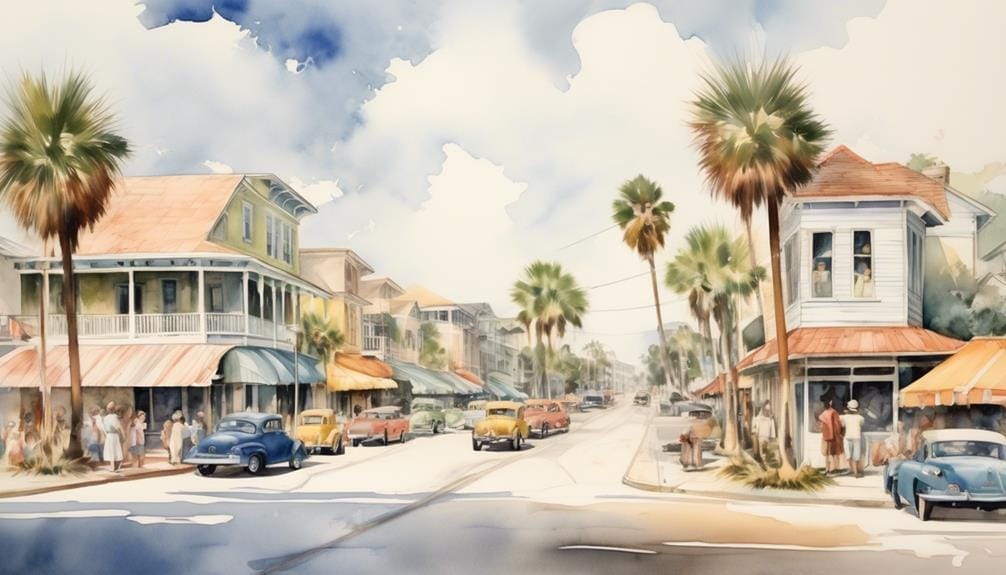
The 20th century witnessed significant growth and expansion in WaterColor, Florida, as the community evolved and adapted to meet the changing needs and desires of its residents and visitors. This period of growth was marked by several key developments:
- Development of Amenities: WaterColor expanded its offerings to include a range of amenities designed to enhance the quality of life for its residents. These amenities included swimming pools, fitness centers, tennis courts, parks, gardens, and access to the prestigious Camp Creek Golf Club. These additions helped to establish WaterColor as a sought-after destination for individuals seeking a resort-style living experience.
- Management and Ownership: WaterColor's growth and expansion were facilitated by the management and ownership of The St. Joe Company, which acquired the community in 1927. The company, along with Troon Golf and St. Joe Clubs and Resorts, played a crucial role in overseeing the development and maintenance of the community, ensuring its continued growth and success.
- New Urbanism Movement: WaterColor embraced the principles of the New Urbanism movement, which emphasizes walkability, mixed-use development, and a sense of community. This approach to planning and design helped to shape the physical layout and architecture of WaterColor, creating a cohesive and vibrant community that attracted residents and visitors alike.
- Culinary and Architectural Influence: The growth and expansion of WaterColor in the 20th century also saw the community embrace its unique culinary and architectural identity. WaterColor's Southern Coastal-style cuisine, featuring fresh seafood from the Gulf of Mexico, became a hallmark of the community's dining scene. Additionally, the architecture of WaterColor incorporated elements from various styles, creating a distinctive and visually appealing environment for residents and visitors to enjoy.
Natural Disasters and Their Impact on Watercolor
Natural disasters have had a significant impact on the community of WaterColor, Florida, due to its vulnerable location on the Gulf of Mexico. Being situated on the coast makes WaterColor susceptible to natural disasters such as hurricanes and tropical storms. These events can cause flooding and high winds, which can damage the community's architecture and infrastructure. The surrounding natural beauty, including Western Lake, can also be affected by storm surges and erosion during these disasters.
To better understand the impact of natural disasters on WaterColor, let's take a closer look at the table below:
| Natural Disasters | Impact on WaterColor |
|---|---|
| Hurricanes | – Flooding and high winds can damage buildings and infrastructure<br>- Disruption of daily life and evacuation orders<br>- Potential loss of tourism revenue |
| Tropical Storms | – Similar impacts as hurricanes, but usually with less intensity<br>- Still pose a risk to infrastructure and property<br>- Potential loss of tourism revenue |
| Storm Surges | – Can cause erosion along the coastline<br>- Threat to the natural beauty of Western Lake and other water bodies<br>- May affect water-based recreational activities |
| Flooding | – Damage to buildings and infrastructure<br>- Potential health hazards due to contaminated water<br>- Disruption of daily life and evacuation orders |
The impact of natural disasters on WaterColor goes beyond the physical damage. The community's response and recovery efforts after these events can significantly affect the overall appeal and functionality of WaterColor as a resort and beach town. Therefore, it is crucial for the community to have effective disaster preparedness plans in place to mitigate the impact of natural disasters and ensure the safety and well-being of residents and visitors.
Watercolor's Contribution to Florida's Tourism Industry
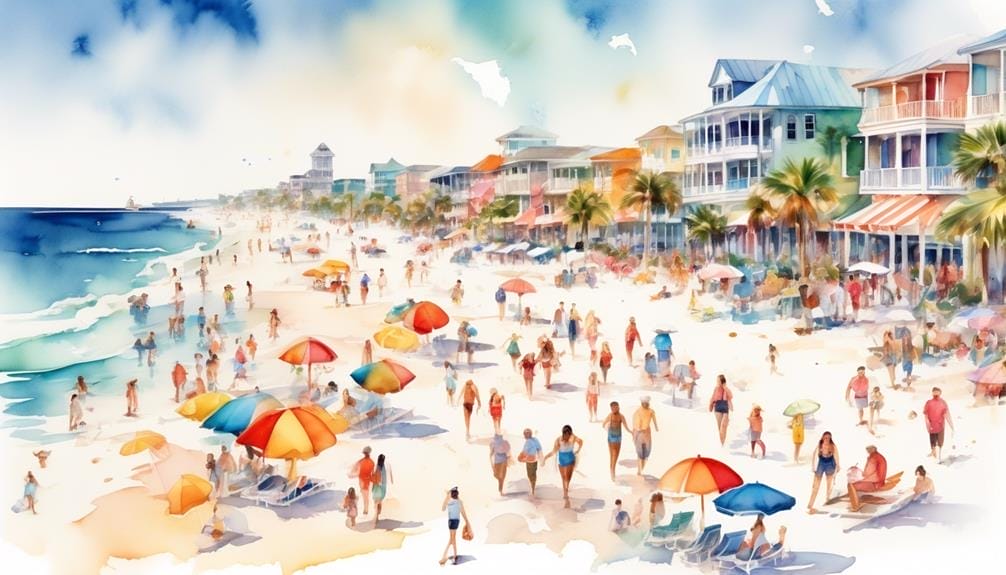
After examining the impact of natural disasters on WaterColor, it's important to now explore the significant contribution that WaterColor has made to Florida's tourism industry.
The community of WaterColor, located in Florida on the Gulf, has become a popular destination for tourists from all over. Here are four key reasons why WaterColor has made such a noteworthy impact on Florida's tourism industry:
- WaterColor Inn: The luxurious WaterColor Inn is a centerpiece of the community, offering top-notch accommodations and amenities. With its beachfront location and stunning views, the inn attracts visitors seeking a relaxing and upscale getaway.
- Amenities and Activities: WaterColor offers a wide range of amenities and activities that cater to tourists' desires for fun and relaxation. From swimming pools and fitness centers to tennis courts and shopping options, there's something for everyone to enjoy.
- Scenic Beauty: The natural surroundings of WaterColor are a major draw for tourists. The community is nestled between the Gulf of Mexico and Western Lake, providing breathtaking views and opportunities for outdoor activities such as fishing, boating, and hiking.
- Recognition and Awards: WaterColor has received prestigious accolades, including the Forbes Four Star designation, which further enhances its reputation as a desirable tourist destination. The community's commitment to providing luxurious accommodations, fine dining experiences, and exceptional recreational facilities hasn't gone unnoticed.
With its stunning architecture, luxurious amenities, and beautiful coastal location, WaterColor has undoubtedly made a significant contribution to Florida's tourism industry. Its popularity among tourists continues to grow, attracting visitors who seek a unique and memorable vacation experience.
Architectural Styles and Landmarks in Watercolor
WaterColor's unique architectural styles and landmarks contribute to the community's charm and appeal, attracting visitors from near and far.
Influenced by English, Dutch, Spanish, and French Colonial styles, the architecture in WaterColor reflects a blend of classical coastal towns and the natural landscape. The community is known for its Southern wood homes, designed based on vernacular architecture. These homes exude a timeless elegance, with their charming porches, crisp white exteriors, and lush gardens.
As you stroll through the streets of WaterColor, you'll come across various landmarks that add to the community's character. The 60-room beachfront WaterColor Inn, with its picturesque views of the Gulf of Mexico, is a prominent landmark in the area. The resort has received numerous accolades, including the Forbes Four Star designation and being voted as the number one resort in the region by Conde Nast Traveler.
Another notable landmark is the Camp Creek Golf Club, offering golf enthusiasts a challenging course surrounded by the beauty of nature.
WaterColor's architectural styles and landmarks create a sense of place and provide a backdrop for memorable experiences in this idyllic coastal community.
Cultural and Artistic Heritage of Watercolor
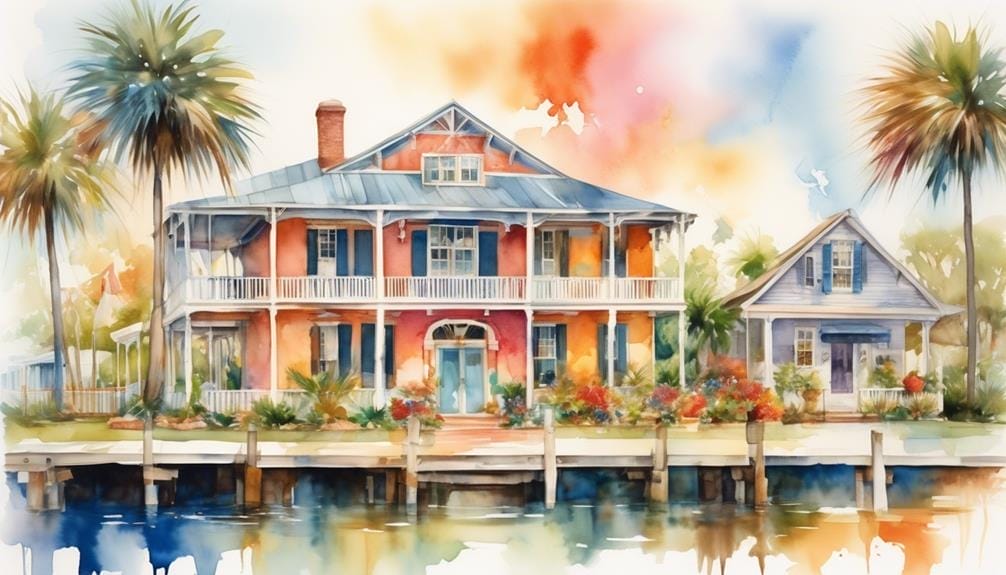
WaterColor, Florida's cultural and artistic heritage is rich and diverse, reflecting the community's passion for the arts and its commitment to preserving its unique heritage. Here are four key aspects of WaterColor's cultural and artistic heritage:
- Artistic Community: WaterColor is home to a vibrant artistic community, with numerous artists residing and working in the area. The community's natural beauty and picturesque landscapes inspire artists to create stunning works of art in various mediums, including painting, sculpture, and photography.
- Art Galleries: WaterColor boasts a number of art galleries that showcase the talents of local and regional artists. These galleries provide a platform for artists to exhibit their work and offer art enthusiasts the opportunity to appreciate and purchase unique and captivating pieces.
- Cultural Events: WaterColor hosts a variety of cultural events throughout the year, including art festivals, exhibitions, and workshops. These events attract artists and art lovers from near and far, fostering a sense of community and promoting the appreciation of art and culture.
- Public Art Installations: WaterColor features numerous public art installations that add beauty and vibrancy to the community. These installations range from sculptures and murals to interactive art pieces, providing residents and visitors with opportunities to engage with art in their everyday surroundings.
WaterColor's cultural and artistic heritage serves as a testament to the community's dedication to fostering a vibrant and thriving arts scene, making it a destination that celebrates creativity and artistic expression.
Modern-day Watercolor: Community and Lifestyle
With its rich cultural and artistic heritage, WaterColor, Florida has evolved into a modern-day community that offers a vibrant lifestyle and a strong sense of community. WaterColor, owned by The St. Joe Company, is a planned community that embraces the principles of New Urbanism. It's designed to promote walkability and connectivity, with homes inspired by the vernacular architecture of Southern wood homes.
Living in WaterColor means enjoying a wide range of amenities and recreational activities. The community boasts a swimming pool, fitness center, tennis courts, parks, and gardens. Residents also have access to the prestigious Camp Creek Golf Club and can enjoy a luxurious stay at the beachfront WaterColor Inn. The community prides itself on providing a variety of shopping and dining options, including Southern Coastal-style cuisine.
WaterColor stands out among other planned communities in the area, such as Celebration, Rosemary Beach, Seaside, and Tradition. Its architecture draws inspiration from English, Dutch, Spanish, and French Colonial styles, creating a unique aesthetic. The community also values equal housing opportunity and is affiliated with Christie's International Real Estate.
The strong sense of community in WaterColor is evident in the numerous social events and activities organized for residents. From art festivals to neighborhood gatherings, there are ample opportunities to connect with your neighbors and build lasting relationships.
WaterColor's subtropical climate and its location within the 32459 Zip code make it an attractive destination for those seeking a modern-day community with a vibrant lifestyle.
Frequently Asked Questions
When Was Watercolor Florida Built?
Watercolor Florida was built in 2000. The development offers a range of accommodations and its architectural style is influenced by English, Dutch, Spanish, and French Colonial styles.
What Is Watercolor Florida Known For?
WaterColor, Florida is known for its artistic charm and natural beauty. The community's picturesque design, beachfront resort, and New Urbanism architecture make it a popular destination. The culinary scene and subtropical climate add to its allure.
What Is the Difference Between Seaside Florida and Watercolor?
The difference between Seaside and WaterColor lies in their size, architecture, and amenities. While both offer pastel-hued vacation homes and resort experiences, Seaside has a charming, small-town feel, while WaterColor boasts a range of community amenities.
Who Owns the Watercolor Resort?
The WaterColor Resort is owned by The St. Joe Company. They oversee the management structure of the resort, with Troon Golf and St. Joe Clubs and Resorts managing the amenities and the WaterColor Inn within the community.
Conclusion
In conclusion, WaterColor, Florida is a captivating blend of history, artistry, and charm. Its rich architectural heritage, inspired by Southern wood homes, creates a picturesque backdrop for a vibrant community.
From its early settlements to its role in the Civil War, WaterColor has played a significant part in Florida's history.
Today, it continues to draw visitors with its pristine beaches, world-class amenities, and a lifestyle that embodies the essence of Southern hospitality.
Experience the allure of WaterColor and immerse yourself in its captivating story.

